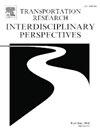Rural-urban migration and household transportation expenditures: A causal exploration method using Indonesian panel data
IF 3.9
Q2 TRANSPORTATION
Transportation Research Interdisciplinary Perspectives
Pub Date : 2025-03-29
DOI:10.1016/j.trip.2025.101408
引用次数: 0
Abstract
Despite extensive studies on the interaction between transport and land use, the literature has largely overlooked whether exposure to significantly denser environments after relocating from low-density settings influence mobility outcomes. This study addresses this gap by proposing a causal framework to estimate the impacts of rural–urban migration on household transportation expenditures. Using the longitudinal Indonesian Family Life Survey (IFLS), Difference-in-Differences (DiD) models are estimated to a balanced panel dataset, comprising households that relocated to urban areas (exposed group) and similar households that migrated to rural areas (comparison group) identified through Propensity Score Matching (PSM). The results suggest statistically insignificant reduction in the share of transportation expenditures attributed to the cumulative exposure to dense and mixed-use urban environments.
城乡迁移与家庭交通支出:使用印尼面板数据的因果关系探索方法
尽管对交通和土地利用之间的相互作用进行了广泛的研究,但文献在很大程度上忽视了从低密度环境迁移后暴露于明显更密集的环境是否会影响流动性结果。本研究通过提出一个因果框架来估计城乡迁移对家庭交通支出的影响,从而解决了这一差距。使用纵向印度尼西亚家庭生活调查(IFLS),将差异中的差异(DiD)模型估计为一个平衡的面板数据集,包括迁移到城市地区的家庭(暴露组)和通过倾向得分匹配(PSM)确定迁移到农村地区的类似家庭(对照组)。结果表明,由于密集和混合用途的城市环境的累积暴露,交通支出份额的减少在统计上并不显著。
本文章由计算机程序翻译,如有差异,请以英文原文为准。
求助全文
约1分钟内获得全文
求助全文
来源期刊

Transportation Research Interdisciplinary Perspectives
Engineering-Automotive Engineering
CiteScore
12.90
自引率
0.00%
发文量
185
审稿时长
22 weeks
 求助内容:
求助内容: 应助结果提醒方式:
应助结果提醒方式:


